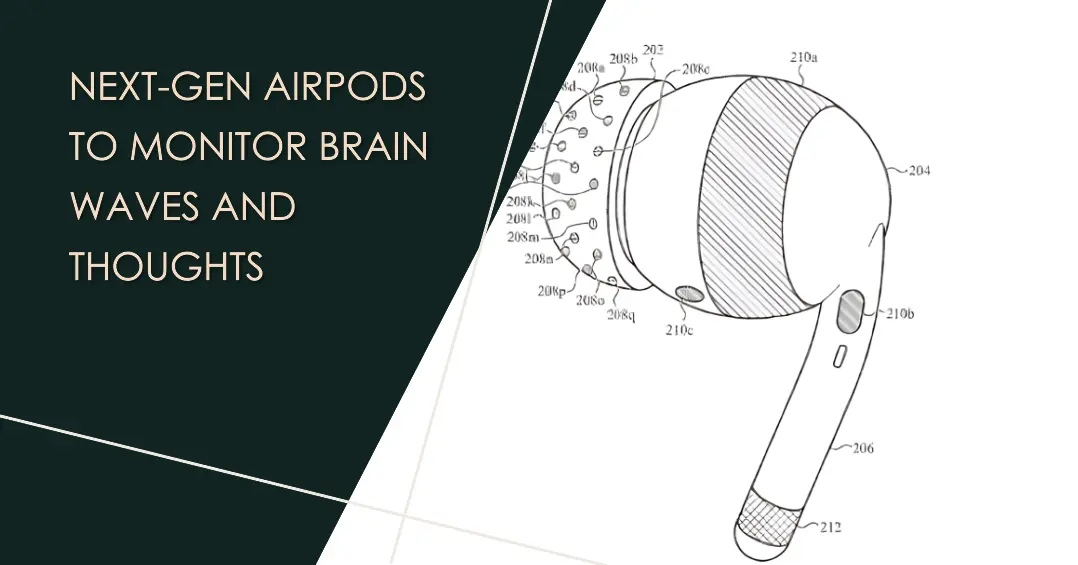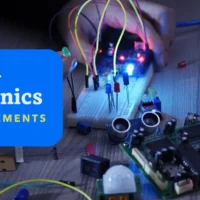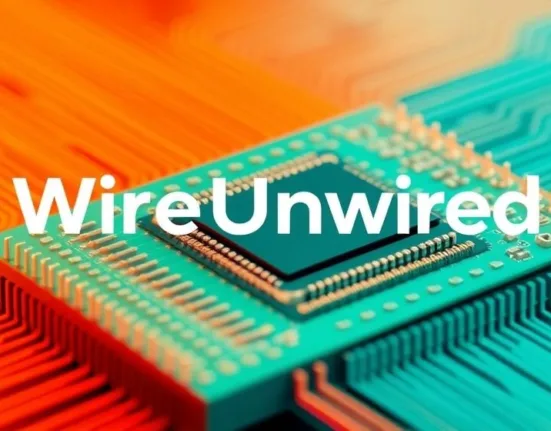Apple’s Next-Gen AirPods Could Monitor Your Brain Waves and Thoughts
- by WireUnwired Editorial Team
- 13 March 2024
- 2 minutes read

“Apple’s Next-Gen AirPods Could Monitor Your Brain Waves and Thoughts”, yes you heard that right .Apple has secretly filed a patent demonstrating AirPods capable of detecting electrical signals from brain activity and extracting features.
The recently patent granted, titled “Ear Bud With Biosensor for Electrophysiological Signals,” describes about the next-gen AirPods embedded with electrodes and sensors capable of detecting electromagnetic pulses from the brain. By monitoring these neural bioelectrical impulses, the next-gen earbuds could potentially interpret mental commands and cognitive states such as memory, focus, perception, and emotion, enabling seamless hands-free control and novel user experiences.
- Airbus Forecasts Massive 19,560 Aircraft Demand Surge in Asia-Pacific by 2045
- African Fintech Startups Expand Services Amid Regional Growth Surge
- Why Tesla May Build Its Own Chip Fab: Breaking Down the AI Semiconductor Push
- Top European Master’s Programs for Chip Design: Opportunities, Trends & Industry Insights
- Qualcomm and MediaTek Ready to Power India’s Chip Manufacturing Surge by 2026
How Does Apple’s Brain-Sensing AirPods Technology Work?
According to the approved patent documentation, the AirPods would incorporate electroencephalography (EEG) sensors and electrodes accurately positioned in the ear region to capture brain wave data. This neural data could then be wirelessly transmitted to a paired device, such as an iPhone or Apple Watch, for processing and interpretation using advanced machine learning algorithms.
Our brain generates unique patterns of neural signals depending on the state of mind and these brain-computer interface technology works on this very principle. They rely on decoding specific patterns in the neural signals associated with different mental states or intentions. For instance, imagining a particular movement could generate a distinct brainwave signature that the AirPods could detect and translate into a corresponding action on the connected device.
Potential Applications of next-gen AirPods
While the applications of mind-reading technology are vast, Apple’s patent specifically highlights several interesting use cases:
- Hands-Free Device Control: Users could navigate through devices, give voice commands, or control smart home devices simply by thinking, eliminating the need for physical input devices
- Mental State Monitoring: The earphones may be able to identify and keep an eye on a number of neurological problems, including epilepsy, sleep difficulties, and brain traumas, by monitoring brainwave patterns.
- Health and Wellness Tracking: By tracking brainwave patterns, the earbuds could potentially detect and monitor various neurological conditions and health conditions like increased tensions, paralysis attacks etc.
- Improved Audio Experiences: By tuning the loudness or audio equaliser settings according to the user’s preferences or cognitive state, the brain data might be used to customise audio output.
Conclusion:
By filing this patent Apple is going to start a new war in neura tech i/o devices .At one side NeuraLink is win the neuralchip war but that is at this time quite risky .It would be interesting to see how thing turn out and how soon will we be able to have this tech in our pockets.
Until then Keep WireUnwiring and join our WhatsApp channel of like minded folks.
Discover more from WireUnwired Research
Subscribe to get the latest posts sent to your email.










